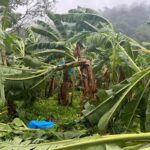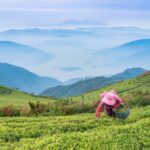How water availability in Mexico is affecting the mango industry

The issue of water availability has become a major concern over the last few decades for Mexico, the world's leading mango exporter with over 2 million tons produced annually.
Over the past six decades, water availability in the country has decreased by 68%, according to data from the Mexican Institute for Competitiveness (IMCO).
This information was shared by Sergio Roberto Marquez, a professor from the Department of Crop Sciences, at the Universidad Autónoma Chapingo in Texcoco, Mexico at the latest Mango Growers Summit organized by the National Mango Board. Marquez said that Mexico uses more than 40% of its surface water yearly.
"We have an average of 457 billion cubic meters of renewable water per year," Marquez said. "Of which 73% is consumed, mainly in agriculture."
Marquez assured that the main challenge for agriculture in general at the moment is climate change because Mexico is one of the most affected countries by the phenomenon.
"Unfortunately we are having a longer and more inconsistent winter, which means we are having multiple blooms and out-of-season blooms," he said.
Flowering is alternating, which means that production windows are being lost because of variations in harvest time.
Pests and Diseases
Marquez explained that the higher temperatures are causing pests and diseases to get "a lot more aggressive."
"We are having difficulty controlling pests, like oidium which is becoming a big problem during the flowering season," Marques said.
Marquez pointed out that in some areas, this is causing issues in the flowering process, with some growers only achieving 10% of the normal flowering.
Affected regions
The drought has been felt particularly in the country's Pacific coast, with the states of Sinaloa and Sonora in the Northwest, two of the main producing regions, especially affected.
"These two states have a lot of reservoirs, but they have depleted a lot from the lack of rainfall," Marquez said. "For example, in Sinaloa, a lot of the reservoirs are at 30% capacity, meaning we have to limit the amount of water we use for crops."
He said that many of the solutions being used in the U.S., like drip irrigation is difficult because most of the farmers in Mexico use surface irrigation, which is "a very wasteful way to irrigate."
Irrigation systems in Mexico are very expensive, and farmers are unable to invest in many new technologies.
Results and Consequences
These issues translate to a reduction in crop yields, not only in mangos but in many other products.
"In some areas, we may be forced to switch crops," he said.
Marquez assured that new varieties have to be much more resistant to high, extreme temperatures and drought conditions.
"We conclude that the Mexican mango production is expanding in ecologically sensitive areas which poses a threat to diversity and water resources," Marquez said.
The industry uses a lot of agrochemicals that are harmful to soil health, contaminate water, and pose a threat to the sustainability of long-term farming prices.
Solutions
In order to alleviate the effects of climate change, Marquez says they require innovation in irrigation techniques and pest management, with technology that enhances productivity while minimizing environmental impacts.
"The adoption of digital platforms for market access and traceability can empower farmers and improve the efficiency in the supply chain," he said.
Limited financial resources and inadequate infrastructure, along with a lack of technical expertise are part of the challenges for the industry.
"We have very limited resources for research, which limits the amount of knowledge that we can share with small farmers," Marquez pointed out. "Our volatile market environment and trade regulations also present a lot of uncertainties for exporters."
Marquez closed by extending an invitation to all spectators for the 14th International Mango Symposium on May 28-31 in Sinaloa, Mexico, with meetings, presentations, and a lot of activities offered.










































